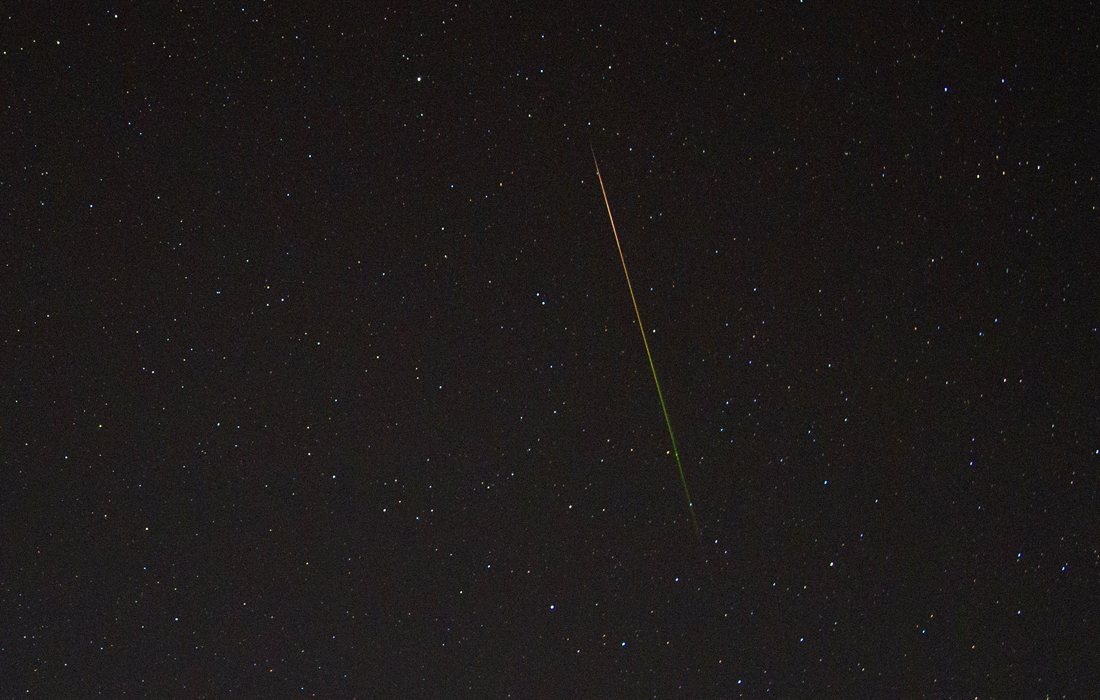The Perseids are a prolific meteor shower associated with the comet Swift–Tuttle. The Perseids are so called because the point from which they appear to come, called the radiant, lies in the constellation Perseus.
The stream of debris is called the Perseid cloud and stretches along the orbit of the comet Swift–Tuttle. The cloud consists of particles ejected by the comet as it travels on its 133-year orbit. Most of the particles have been part of the cloud for around a thousand years.
The shower is visible from mid-July each year, with the peak in activity between 9 and 14 August. During the peak, the rate of meteors reaches 60 or more per hour. Some can be seen before midnight, often grazing the Earth's atmosphere to produce long bright trails and sometimes fireballs. Most Perseids burn up in the atmosphere while at heights above 80 kilometres.
Colors are seen as a Perseid meteor vaporizes as it enters the Earth's atmosphere, at around 130,000 miles (210,000 km) per hour.
The colors are the result of the composition of the meteoroid and gases that ionize in the atmosphere with the passage of the meteor. They start out green, and change to yellow and then red.
Technical info:
Canon 7D - exposure 15 sec

